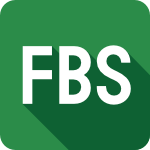Open FBS Forex trading account with 1:3000 leverage and Negative Balance Protection
FBS offers Ultimate trading conditions for MT4 and MT5 traders!
Find out more about FBS today, and you will be surprised with their trading conditions.


FBS with 1:3000 FX High Leverage and Promotions
Why should your clients choose FBS Broker to trade?
High leverage is one great advantage of Forex investment. Only FBS offers with the highest leverage 1:3000.
This leverage is available for all of you to reach out to even higher amount and aim for bigger profits.
FBS MT4 and MT5 now come with Leverage 1:3000 and dozens of Bonus Promotions.
Note that the available Forex leverage is different depending on the account type you choose with FBS.
Visit the page here to see the list and comparison of FBS’s all trading account types.
Find out more about it here.
Only FBS offers the best trading conditions that they can’t miss out, and which no other broker could offer.
And not just the leverage FBS offers for online traders.
They also offer 10 Bonus Promotions such as No Deposit Bonus, Trading Bonus, Deposit Bonus etc…
Each bonus has different conditions and may fit for certain types of traders.
It’s time to take advantage of these promotions.
Find out the latest offers and promotions here.
Is 1:3000 Leverage Risky?
High leverage means high risks.
To assist traders in this matter, FBS supports NBP (Negative Balance Protection) for all traders.
This NBP assures that no traders will lose more than they deposit in their accounts.
This system will simply adjust any negative balances to zero.
With FBS, you can use the high leverage 1:3000 to manage your positions, but feel safe that your loss is limited to your total deposit amount.
You can find out more about FBS’s 1:3000 Forex leverage and its conditions in the page here.
FBS protects you with Stop Out and NBP
We often hear the opinion that “FX is scary because it has a stop out”, but it is a big misunderstanding.
Rather, it can be said that the stop out is a “safety device” to prevent the funds from being reduced more than expected.
If a loss of foreign exchange occurs, the net assets of your account will decrease by that amount.
Then, when the loss of foreign exchange further expands and the net asset value falls below the margin requirement, the position is automatically closed.
This is called a stop out, which is, so to speak, a forced end of trading.
By taking such measures, the risk of the loss expanding beyond the margin and becoming a debt is avoided.
You can take advantage of leverage in equity margin trading too, but there are cases where a forced stop out system is not used.
As a result, many investors are willing to pay additional money (additional margin) every time they fall below the pre-margin maintenance rate.
When the market moves in the opposite direction to what you expected, the flow is often not so easy to change.
In other words, it is easy to follow the pattern that the loss increases steadily if you are tenacious.
Even with such things in mind, it can be said that it is safer to trade with a stop out.
In case of FBS, There are both Stop Out and NBP (Negative Balance Protection), which both work as a protection for traders.
When does Stop Out occur?
How much margin can be reduced before the stop out is executed?
That is when the funds remaining in the account have fallen to the certain margin maintenance rate.
In case of FBS, the margin maintenance rate is 30%.
Margin maintenance rate is a numerical value calculated by the formula “net assets / required margin x 100”.
The margin requirement is the minimum amount required to maintain the position you have established.
And the “margin maintenance rate” at where stop out is triggered, varies depending on the FX broker.
In the case of FBS, all positions will be closed automatically when the margin maintenance rate becomes 30% or less.
In other words, if you pay attention to the trend of margin maintenance rate along with market trends, you can know in advance that the possibility of stop out has increased.
It is better to pay close attention to the margin maintenance ratio when you have multiple positions.
How to avoid Stop Out beforehand?
There are two ways to avoid the stop out when the margin maintenance ratio reaches the warning zone.
- Add additional funds to the account.
- Close some positions.
In both cases, the margin maintenance rate will recover accordingly.
However, as mentioned above, the market trend that has occurred once is likely to continue for a while, and even if we stick with additional funds, the flow may not easily reverse, and there is a tendency that the possibility of stop out increases again.
Therefore, it may be safer not to take the first measure without care.
It is important to manage your position so that you do not easily fall into the stop out from the beginning, rather than sticking in with additional funds.
Instead of building a full position that can be built up with the money you have in your account, you want to keep your funds moving less and lower your effective leverage.
Utilize Stop Loss order to trade efficiently
Also, at the level before stop out is automatically executed, it is also one way to admit that your expectations are wrong and to close the position early.
When building a position, you should also place a stop loss order in advance.
Stop loss is an order placed at a level where further loss expansion cannot be tolerated.
If it is executed, the loss will be confirmed, but it will not cause unexpected more loss.
For example, let’s say you have a EUR buy position of EUR 100,000 with USD.
The margin requirement for the maximum leverage (3000 times) is around 33 EUR.
And suppose that the account had 5,000 USD in it.
After that, when the market price moves toward the USD’s appreciation against the EUR, a foreign exchange loss will occur, and net assets will decrease accordingly.
If the USD strengthens further and the exchange loss reaches close to 1,000 USD, the net assets will decrease to about 4,000 USD, which is the same as the required margin.
In other words, the stop out is automatically executed.
If you placed an order to make a stop loss before the level at which the stop out was executed, the loss could be reduced to a much smaller amount.
Then you were able to avoid the risk if the USD’s appreciation in value did not stop.
Of course, there may be cases where the market flow reverses immediately after the stop loss order is completed.
In that case, it would be better to order another buy position, so it would be a solid move rather than continue trading against the current flow.
Take advantage of FBS’s trading condition
If you think of risk management (control), it might give the impression that you need some advanced technique and judgment ability.
However, as we have seen, risk management is not at all difficult.
You should check the trend of the margin maintenance rate after knowing the mechanism of loss cut, and do not build a large position so that the effective leverage does not become excessively high.
And if you place a stop loss order far before the loss cut, at least a fatal loss will not occur.
With FBS, you can utilize up to 1:3000 leverage, stop loss order type, stop out % and also NBP (Negative Balance Protection).
Open FBS’s Real Account today to start trading Forex and CFDs with the optimal trading condition.
Latest Features
- Close






